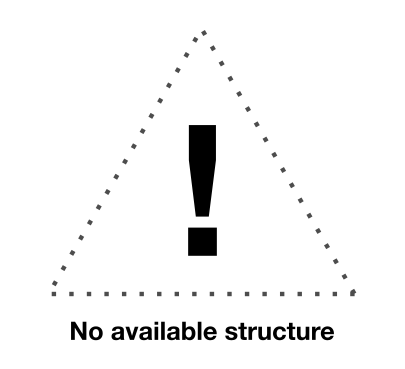P71039
Gene name |
mta (ywnD, BSU36600) |
Protein name |
HTH-type transcriptional activator mta |
Names |
Multidrug transporter activation protein |
Species |
Bacillus subtilis (strain 168) |
KEGG Pathway |
bsu:BSU36600 |
EC number |
|
Protein Class |
|

Descriptions
The Mta (MerR family transcriptional regulator) belongs to the TipA class of transcription factors, which constitutes minimal autoregulated multidrug resistance (MDR) against diverse antibiotics. Autoinhibitory mechanism in SkgA has been identified by structural analysis. Due to the structural similarity of Mta to SkgA, Mta could also possess an autoinhibitory mechanism. In the case of SkgA, upon binding of antibiotics to the TipAS domain within SkgA, SkgA is able to induce transcription of genes involved in multidrug resistance such as efflux pumps and antibiotics sequester proteins. The autoinhibition mechanism involves the a6–a7 region of the TipAS domain, which, in the unliganded state, interacts with the DNA-binding domain to stabilize the dimeric interface and hinder promoter DNA binding. This interaction prevents transcriptional activation by sterically blocking DNA access to the DNA-binding domain.
Autoinhibitory domains (AIDs)
Target domain |
2-72 (MerR-type HTH domain) |
Relief mechanism |
Ligand binding |
Assay |
|
Accessory elements
No accessory elements
Autoinhibited structure

Activated structure

3 structures for P71039
| Entry ID | Method | Resolution | Chain | Position | Source |
|---|---|---|---|---|---|
| 1JBG | X-ray | 275 A | A | 1-109 | PDB |
| 1R8D | X-ray | 270 A | A/B | 1-109 | PDB |
| AF-P71039-F1 | Predicted | AlphaFoldDB |
No variants for P71039
| Variant ID(s) | Position | Change | Description | Diseaes Association | Provenance |
|---|---|---|---|---|---|
| No variants for P71039 | |||||
1 associated diseases with P71039
[MIM: 618999]: Autoinflammation, immune dysregulation, and eosinophilia (AIIDE)
An autosomal dominant disorder characterized by immune dysregulation, severe atopic dermatitis, and chronic gastrointestinal inflammation. Additional features include asthma, food or environmental allergies, as well as poor overall growth with short stature. . Note=The disease is caused by variants affecting the gene represented in this entry.
Without disease ID
- An autosomal dominant disorder characterized by immune dysregulation, severe atopic dermatitis, and chronic gastrointestinal inflammation. Additional features include asthma, food or environmental allergies, as well as poor overall growth with short stature. . Note=The disease is caused by variants affecting the gene represented in this entry.
15 regional properties for P71039
| Type | Name | Position | InterPro Accession |
|---|---|---|---|
| domain | FERM domain | 34 - 420 | IPR000299 |
| domain | Protein kinase domain | 583 - 855 | IPR000719-1 |
| domain | Protein kinase domain | 875 - 1153 | IPR000719-2 |
| domain | SH2 domain | 437 - 546 | IPR000980 |
| domain | Serine-threonine/tyrosine-protein kinase, catalytic domain | 585 - 844 | IPR001245-1 |
| domain | Serine-threonine/tyrosine-protein kinase, catalytic domain | 876 - 1147 | IPR001245-2 |
| active_site | Tyrosine-protein kinase, active site | 999 - 1011 | IPR008266 |
| binding_site | Protein kinase, ATP binding site | 881 - 908 | IPR017441 |
| domain | FERM central domain | 154 - 277 | IPR019748 |
| domain | Band 4.1 domain | 32 - 286 | IPR019749 |
| domain | Tyrosine-protein kinase, catalytic domain | 583 - 845 | IPR020635-1 |
| domain | Tyrosine-protein kinase, catalytic domain | 875 - 1149 | IPR020635-2 |
| domain | JAK, FERM F2 lobe domain | 147 - 277 | IPR041046 |
| domain | FERM F1 lobe ubiquitin-like domain | 38 - 128 | IPR041155 |
| domain | JAK1-3/TYK2, pleckstrin homology-like domain | 284 - 421 | IPR041381 |
1 GO annotations of cellular component
| Name | Definition |
|---|---|
| cytoplasm | The contents of a cell excluding the plasma membrane and nucleus, but including other subcellular structures. |
2 GO annotations of molecular function
| Name | Definition |
|---|---|
| DNA binding | Any molecular function by which a gene product interacts selectively and non-covalently with DNA (deoxyribonucleic acid). |
| DNA-binding transcription factor activity | A transcription regulator activity that modulates transcription of gene sets via selective and non-covalent binding to a specific double-stranded genomic DNA sequence (sometimes referred to as a motif) within a cis-regulatory region. Regulatory regions include promoters (proximal and distal) and enhancers. Genes are transcriptional units, and include bacterial operons. |
No GO annotations of biological process
| Name | Definition |
|---|---|
| No GO annotations for biological process |
No homologous proteins in AiPD
| UniProt AC | Gene Name | Protein Name | Species | Evidence Code |
|---|---|---|---|---|
| No homologous proteins | ||||
| 10 | 20 | 30 | 40 | 50 | 60 |
| MKYQVKQVAE | ISGVSIRTLH | HYDNIELLNP | SALTDAGYRL | YSDADLERLQ | QILFFKEIGF |
| 70 | 80 | 90 | 100 | 110 | 120 |
| RLDEIKEMLD | HPNFDRKAAL | QSQKEILMKK | KQRMDEMIQT | IDRTLLSVDG | GETMNKRDLF |
| 130 | 140 | 150 | 160 | 170 | 180 |
| AGLSMKDIEE | HQQTYADEVR | KLYGKEIAEE | TEKRTSAYSA | DDWRTIMAEF | DSIYRRIAAR |
| 190 | 200 | 210 | 220 | 230 | 240 |
| MKHGPDDAEI | QAAVGAFRDH | ICQYHYDCTL | DIFRGLGEVY | ITDERFTDSI | NQYGEGLAAF |
| 250 | |||||
| LREAIIIYCD | HQENPRP |